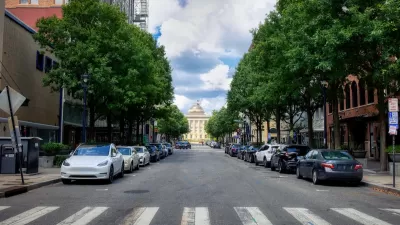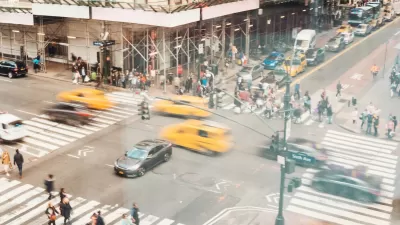Forget self-driving cars—some low-cost artificial intelligence tools can improve traffic safety now.

Although autonomous vehicles frequently steal the media spotlight, Tanya Mohn argues that there are more practical, immediate ways to use artificial intelligence to improve traffic safety. As Mohn writes, “Artificial intelligence is already being used to enhance driving safety: cellphone apps that monitor behavior behind the wheel and reward safe drivers with perks and connected vehicles that communicate with each other and with road infrastructure.”
According to David Ward, president of the Global New Car Assessment Program, there are several “beneficial, low-cost, intermediate technologies that are available now. A prime example is intelligent speed assistance, or I.S.A., which uses A.I. to manage a car’s speed via in-vehicle cameras and maps,” a technology that will soon be mandatory in the European Union.
Other technologies include cameras that can assess distracted driving behavior, allowing law enforcement to see whether a driver is holding a phone below the dashboard, for example. Some transportation and city officials see A.I. as a tool that can further Vision Zero goals. Data gathered and analyzed using A.I. tools can help transportation planners understand traffic patterns and anticipate trends. And while some see speed cameras as a discriminatory revenue grab, others believe automated traffic enforcement can reduce potentially violent interactions with law enforcement and save lives by reducing crashes.
“Not everyone is sold on a reliance on computer learning. Mr. Ward, of the Global New Car Assessment Program, said humans still outperform artificial intelligence.” Additionally, “As with many A.I. innovations, the technology also raises privacy issues.” Policymakers looking to use A.I. to improve traffic safety will have to balance the benefits of the technology with privacy and liberty concerns.
FULL STORY: Can A.I. All but End Car Crashes? The Potential Is There.

Planetizen Federal Action Tracker
A weekly monitor of how Trump’s orders and actions are impacting planners and planning in America.

San Francisco's School District Spent $105M To Build Affordable Housing for Teachers — And That's Just the Beginning
SFUSD joins a growing list of school districts using their land holdings to address housing affordability challenges faced by their own employees.

The Tiny, Adorable $7,000 Car Turning Japan Onto EVs
The single seat Mibot charges from a regular plug as quickly as an iPad, and is about half the price of an average EV.

With Protected Lanes, 460% More People Commute by Bike
For those needing more ammo, more data proving what we already knew is here.

In More Metros Than You’d Think, Suburbs are Now More Expensive Than the City
If you're moving to the burbs to save on square footage, data shows you should think again.

The States Losing Rural Delivery Rooms at an Alarming Pace
In some states, as few as 9% of rural hospitals still deliver babies. As a result, rising pre-term births, no adequate pre-term care and "harrowing" close calls are a growing reality.
Urban Design for Planners 1: Software Tools
This six-course series explores essential urban design concepts using open source software and equips planners with the tools they need to participate fully in the urban design process.
Planning for Universal Design
Learn the tools for implementing Universal Design in planning regulations.
Smith Gee Studio
City of Charlotte
City of Camden Redevelopment Agency
City of Astoria
Transportation Research & Education Center (TREC) at Portland State University
US High Speed Rail Association
City of Camden Redevelopment Agency
Municipality of Princeton (NJ)





























